Information of Langtang National Park
Langtang is the name of the mountain and region in the north-center of Nepal, situated about 50 kilometers north of the Kathmandu Valley. This region is famous for Langtang National Park, which was established in 1976 A.D.
It is the first Himalayan national park and the fourth protected area in the country. It covers a total area of 1,710 square kilometers in the Rasuwa, Nuwakot, and Sindhupalchok Districts of the central Himalayan region, surrounding 26 Village Development Communities. Its western boundary is the Bhote Kosi and Trishuli rivers, while the north and east borders Tibet China, and the southern border is located 30 kilometers north of Kathmandu city.
About 6,000 people live in the region, with most depending on agriculture. The Tamang and Sherpa peoples are the main majority in the region. The park is marked by a large variety of climatic zones, ranging from subtropical to alpine. Approximately 25% of the park is covered by forests, including Oak, Maple, Pine trees, and various types of Rhododendron.
The presence of the Himalayan black bear, Himalayan Thaar, red pandas, and various types of birds makes the park attractive. Gosaikunda lakes and Kyanjin Gompa are spiritual sites for Hindus and Buddhists in the park. Mt. Langtang Lirung (7,245 m) is the highest point in the park, alongside many other snow peaks.
Transportation to and from Langtang Valley Trek
If you're wondering about access to and from the Langtang Valley Trek starting from Kathmandu, here's some good news. Langtang Valley is easily reachable from Kathmandu, the capital city of Nepal. The valley is situated to the north of Kathmandu and it is accessed by land. Direct buses to Syabrubesi from Kathmandu are available. Trekking itineraries are usually flexible, considering the distance of only 122 kilometers for both the starting and ending points.
Public Bus: Direct buses from Kathmandu to Syabrubesi, the gateway to the Langtang Valley, are available. The journey typically takes around 7 to 9 hours, covering a distance of approximately 122 kilometers.
Private Vehicle: For a more comfortable and faster journey, you can hire a private vehicle from Kathmandu to Syabrubesi. This option generally takes between 5 to 7 hours, depending on road conditions and traffic. However, private transportation tends to be more expensive than taking a public bus.
Additionally, road and weather conditions should be taken into account, especially during the monsoon season when landslides and road closures are more common.
Best Season for Langtang Valley Trek
There are two main trekking seasons in Nepal: autumn (September to December) and spring (March to May), which are considered the best times for trekking. The same rule applies for the Langtang Valley Trek. However, the Langtang Valley trek is also favorable from the beginning of September to the end of May. During this period, the weather is usually sunny and warm, offering stunning mountain views and clean air for trekkers in this area.
Winter and summer seasons are considers off-season for the Langtang Valley Trek.
Nevertheless, for those seeking solitude and a closer connection with nature and culture, trekking during the winter months of January and February is also an option. While temperatures may be colder, visibility remains good, providing favorable conditions for trekking.
On the other hand, the summer season (June to August) experiences heavy rainfall, but it is an ideal time for nature enthusiasts. Therefore, selecting the best season for the Langtang Valley trek in Nepal ultimately depends on your individual preferences and vacation schedules. It is important to choose the ideal trekking season for your Nepal adventure based on your availability and personal preferences.
Temperatures of Langtang Valley Trek
The temperatures below are just guidelines for the Langtang Valley Trek. Those temperatures can change every year due to global warming as well as weather patterns can change rapidly in mountainous regions. Anyway, the temperatures you might encounter during the Langtang Valley Trek will vary significantly depending on the time of year you visit and the altitude you are at.
Here is a general overview of the Langtang Valley Trek Temperature:
Spring (March to May):
- Daytime temperatures: 10°C to 15°C (50°F to 59°F) at lower altitudes, gradually decreasing as you ascend.
- Nighttime temperatures: 0°C to -5°C (32°F to 23°F) at lower altitudes, possibly dropping below -10°C (14°F) at higher elevations.
Summer (June to August):
- Daytime temperatures: 15°C to 25°C (59°F to 77°F) at lower altitudes.
- Nighttime temperatures: 5°C to 10°C (41°F to 50°F) at lower altitudes, potentially warmer at higher elevations.
Autumn (September to November):
- Daytime temperatures: 10°C to 15°C (50°F to 59°F) at lower altitudes.
- Nighttime temperatures: 0°C to -5°C (32°F to 23°F) at lower altitudes, dropping further at higher elevations.
Winter (December to February):
- Daytime temperatures: 5°C to 10°C (41°F to 50°F) at lower altitudes.
- Nighttime temperatures: -5°C to -10°C (23°F to 14°F) at lower altitudes, potentially dropping below -15°C (5°F) at higher elevations.
Remember that these are approximate figures, and temperatures can vary based on weather conditions, altitude, and microclimates. It's essential to be prepared for colder temperatures, especially at higher elevations, regardless of the season. Additionally, weather patterns can change rapidly in mountainous regions, so it's wise to pack and dress in layers to adapt to varying conditions.
Langtang Valley Trek Difficulty
The Langtang Valley Trek is generally considered to be of easy to moderate difficulty, making it suitable for trekkers of all levels, including beginners. The trek involves some steep ascents and descents, with daily walks averaging 5-8 hours amidst varying terrain such as forests, rugged paths, and rocky sections. Altitude is a factor to consider, as the trek begins at an altitude of 1460 meters in Syabrubesi and reaches its highest point at 5000 meters at Tserko-Ri.
Despite the altitude challenges, the Langtang Valley Trek is often supposed as less strenuous compared to other popular treks in Nepal, such as the Everest Base Camp or Annapurna Circuit. Nevertheless, it's important for trekkers to maintain a reasonable level of fitness and adequately prepare for the physical demands of the journey, including acclimatization to higher altitudes.
Food and Accommodation in Langtang Valley Trek
The Langtang Region is the third most popular trekking destination in Nepal, after the Everest and Annapurna Regions. There are many trekking routes, and the Langtang Valley Trek is one of the best among them. The trekking trail in the Langtang Valley is well managed by the Langtang National Park and the local community.
There are numerous accommodations and restaurants along the trekking trail, as new houses are built every year to accommodate the increasing number of trekkers. Therefore, you can easily find comfortable accommodation in the Langtang Valley Trek. Almost all tea-houses (lodges) strive to provide the best service for all travelers. Typically, lodges offer private rooms (with two beds) for customers with shared indoor bathrooms. However, if you prefer luxury accommodation, there are options available. Some places have a limited number of lodges for accommodation. The quality of lodges varies at different locations, so you can choose the best one based on your budget.
Each lodge has a food menu, and the food items offered are mostly the same. We strongly recommend trying the typical Nepali dish "Dal-Bhat" (boiled rice, vegetables, lentil soup), but you can also choose other items from the menu. Most lodges produce fresh vegetables in their gardens and serve them to customers. While the cooks are trained, the taste of the food may differ slightly from Western cuisine. Fresh meat is not readily available in the mountain area, so it's advisable to opt for vegetarian options during the Langtang Valley Trekking.
You can purchase all types of drinks at every lodge, but prices tend to increase as you ascend higher. It's possible to drink normal water by using purification tablets. However, it's recommended to avoid alcoholic drinks as you ascend to higher altitudes.
Required Permits and cost for Langtang Valley Trek
The Langtang Valley Trek lies within Langtang National Park, so there is no need for a special permit like those required for restricted areas such as Upper Mustang, Upper Dolpo, Manaslu Region, Nar-Phu Valley, and others. However, our government has implemented two permits specifically for the Langtang Trek, both of which are mandatory for anyone trekking in the Langtang Region.
These permits must be presented at the checkpoints along the Langtang Valley trekking route. If you embark on the trek without these permits, you will need to purchase them on-site at an additional charge (penalty), or you may face legal consequences according to Nepalese law, including being required to turn back. These permits can be obtained either through a registered trekking company or the Tourism Board (Bhrikuti Mandap).
The permits required are as follows, with their respective costs per person (per trek):
- TIMS (Trekker’s Information Management System): US$ 20
- Langtang National Park Entry Permit: US$ 30
Side Trip from Kynajin Gompa – During The Langtang Valley Trek
Kyanjin Gompa is the name of the place and is home to an old, famous monastery. It is also the final destination for the Langtang Valley Trek. It is the last settlement along the route, and beyond this point, there are no teahouse accommodations. After reaching Kyanjin Gompa, there are a few places to visit, which are listed below:
- Kyanjin RI – 4400 is lower view point and 4770 is higher view point
Kyanjin Ri, also spelled Kyangjin Ri, is a popular hiking viewpoint from Kyanjin Gompa in the Langtang Valley of Nepal, offering two viewpoints — a lower one around four thousand four hundred meters and a higher one about four thousand seven hundred seventy meters — both providing panoramic views of the Langtang Himalayan range including Langtang Lirung, Dorje Lakpa, Langshisa Ri, Gangchempo, and more, as well as stunning glaciers, icefalls, and serene valleys.
Making it perfect for a sunrise or sunset hike if started early or late, with the hike to the lower viewpoint taking about three hours round trip and to the higher viewpoint around five hours round trip, for which it is recommended to start early in the morning to avoid afternoon clouds, dress in layers due to the wind and cold near the top, bring plenty of water and snacks as there are no shops along the trail, use trekking poles to assist on steep sections, and ascend slowly and steadily due to the challenges of high altitude.
Tserko Ri (also spelled Cherko Ri) is one of the highest and most rewarding day hikes on the Langtang Valley trek in Nepal. Tserko Ri is situated at an altitude of 4,980 meters (16,339 feet) above sea level. The hike starts from Kyanjin Gompa (3,870 meters) and typically takes around 4–5 hours to ascend and about 3 hours to descend, depending on fitness level and acclimatization.
The trail involves a long, steady, and steep ascent across open grassy hills and rocky sections. There is no technical climbing involved, but it is challenging due to the thin air and the steepness. Tserko Ri offers spectacular 360° panoramic views of the Langtang Himalayan range up close, including Langtang Lirung (7,227m), Langshisa Ri, Dorje Lakpa, Gangchempo, and, on clear days, even Shishapangma in Tibet.
This viewpoint is less crowded than Kyanjin Ri because of the longer distance and more adventurous nature of the hike. Along the way, there is a chance to see wildlife such as blue sheep (bharal), Himalayan birds, as well as beautiful glacier views and striking ice formations.
Due to the long distance and physical challenge, it is recommended to start early (around 5:00–6:00 am) for clearer weather and to have more time to enjoy the experience.
It is highly recommended that trekkers carry enough water and energy snacks, as there are no shops after Kyanjin Gompa. Wearing warm layers is essential because temperatures at the summit can be very cold, especially with the wind chill. Hike slowly and steadily, as the high elevation makes breathing more difficulty. Trekking poles are also very helpful for both the ascent and descent.
- Kyanjin Monastery and Cheese Factory in Kyanjin Gompa
Around Kyanjin village, there are two notable places to visit: Kyanjin Monastery and the Cheese Factory.
Kyanjin Monastery is a small, ancient Buddhist monastery located near the center of Kyanjin village. According to legend, it is about 700 years old. While the interior decorations are original and very old, the building itself was reconstructed after the 2015 earthquake. The monastery holds great spiritual significance for the local Tamang and Tibetan Sherpa communities. It is a peaceful place, surrounded by massive snowy peaks like Langtang Lirung (7,227 meters).
After reaching Kyanjin village, most trekkers visit the monastery for prayers, meditation, and to experience the local Buddhist culture. The monastery is often adorned with fluttering prayer flags and surrounded by Mani stones, adding to its spiritual and cultural atmosphere.
The Kyanjin Cheese Factory was built with Swiss assistance in the 1950s and is now operated by the Nepalese government through the Dairy Development Corporation. It is located in Kyanjin village.
The factory produces fresh, mild, and delicious yak cheese. (In reality, most of the animals are yak-cow hybrids called "dzo" or chauri in Nepali.) Most trekkers visit the factory to see how the cheese is made and to buy some for tasting.
The best time to visit the factory is during the summer when yaks and dzo graze in the high pastures, resulting in the freshest cheese production.
Communication in the Langtang Valley Trek
The Langtang region is a popular trekking destination in Nepal. Two years ago, there was only basic mobile network and internet service available. However, nowadays, there are reliable mobile network services and internet services throughout the entire Langtang Valley trekking area. Therefore, internet service will be accessible in all areas, but tea houses and lodges may provide internet access for an additional charge.
If you do not have a Nepali SIM card for communication with your family or if you do not use internet services, our guide can assist you in sending messages through their mobile phone. Our guides always carry cellular phones and can contact the Kathmandu trekking office to provide updates on the trek and your health condition. Additionally, we are equipped to handle any problems that may arise during the trek.
Travelling is an important aspect of life, so we prioritize ensuring your safety and health during trekking in Nepal. Nowadays, you can obtain a local SIM card at Kathmandu airport upon arrival to access 3G and 4G internet services, as most trekking routes in Nepal are covered by mobile network services. If you require a Nepali SIM card, we can provide one for your trekking adventure, but please inform us before embarking on the trek.
Acclimatization:
High altitude sickness is a common issue in the high Himalayan areas as you ascend to higher elevations. It can onset rapidly, but its symptoms are preventable. While previous high altitude trekking experience can be beneficial, if you're trekking above three thousand meters, it's essential to take defense against altitude sickness.
This includes scheduling extra acclimatization days for the trip, walking at a slow pace, staying hydrated by drinking plenty of water, avoiding alcohol, ascending gradually and sleeping at lower elevations, and spending at least two nights at every 500-meter increase above 3500 meters to prevent altitude sickness during trekking in Nepal.
All our trekking itineraries are designed with flexibility to accommodate acclimatization days, with the first priority being your health and safety to ensure the trek is completed without any issues. We also provide basic medication to support emergency rescue if the situation worsens.
Therefore, it's important that you inform your guide or leader about your health condition daily, and they will assess whether it's safe for you to continue the trip or if it's necessary to return. Your well-being throughout the trek is our utmost concern.
Tipping information
The guides, porters, drivers, and all workers involved in the tourism industry in Nepal typically expect to receive tips during your tour, trekking, and other activities. Tipping is at the discretion of travelers, and workers usually receive tips at the end of the trek or tour. While travelers typically tip around 10% of their payable amount, the amount given might depend on the quality of service provided by the workers.
It is important to the High Pass Adventure working team, who take care of you throughout your visit to Nepal, to feel appreciated and motivated by providing outstanding service and offering an inspiring trip of a lifetime experience.
Trip extension
If you have extra time after completing the trek, you have the option to engage in various activities or short treks in Nepal. We offer a wide range of short tour packages and adventure activities, including Jungle safari tours in Chitwan National Park and Bardiya National Park. Additionally, you can explore Pokhara city, embark on Nagarkot Hiking or Dhampus hiking, or enjoy a day rafting trip on the Trisuli River.
For those seeking adventure, we offer activities such as paragliding, canoeing, ultra-light flights, bungee jumping, and mountain biking. These activities are optional and not included in your trekking package cost. However, if you choose to participate in any of these activities after your trek with us, we can arrange them for you at a reasonable cost and provide a good discount. This allows you to further explore and experience the beauty and excitement of Nepal.
Travel insurance and insurance policy
Trekking in Nepal offers a wide range of difficulty levels in the Himalayas, from easy to challenging. However, due to the changing climate in the Himalayas, there is an increased risk of high altitude sickness and other potential mishaps.
Trekking in the Nepalese Himalayas, especially at high altitudes (above 4,000 meters), requires strong trekking abilities, making travel insurance necessary. In the event of an accident that requires medical attention or evacuation, the costs associated with returning to a city and receiving treatment can be significant. Therefore, it's crucial to ensure that your insurance covers expenses such as air ambulance services, medical care, and other travel-related risks like delayed flights and lost or stolen baggage. Your insurance policy should also cover your entire itinerary while visiting Nepal, including hikes above 5,500 meters.
If your insurance policy doesn't cover hikes around 5,500 meters, you will be responsible for any unforeseen costs incurred during your trek in Nepal. As part of the booking process for trekking and climbing in Nepal, all trekkers must provide a copy of their certificate from their comprehensive travel insurance policy to High Pass Adventure. This ensures that proper precautions are taken to address any potential emergencies during your trekking experience in Nepal.
Trekking Gear List
Travel equipment are necessary to pack before you travel. We hope it is too much to carry from your home to others country but some are the necessary equipment can be hired or buy in Kathmandu around Thamel. These general equipment are for all seasons while on trekking in Nepal, but may be different as per the different season and duration of trekking routes on your chosen trip.
Documents:
- Passport and 4 passport size photos
- Travel insurance details (in case an emergency evacuation if needed)
- Boarding passes for flights
- Driver’s license (if needed)
- Cash USD
- Credit/Debit Card (Ensure you have $500 on your card incase an emergency helicopter evacuation is needed)
Sleeping:
- Sleeping bag (Comfort rating -15 Celsius recommended)
- Sleeping bag liner (Optional)
Footwear:
- Trekking boots: one pair lightweight
- Sandals for city and tea house footwear
- Shoes for the plane and tea houses (Optional)
- Gaiters for hiking in winter to the base camp
- Thin, lightweight inner socks
- Thick, warm wool hiking socks
Clothing for Body:
Please make sure that you have non-cotton clothing for trekking:
- Base-layer t-shirts (e.g. running t-shirts)
- Fleece/Windproof jacket
- Waterproof jacket
- Down jacket for warmth
- Underwear
- Base-layer trousers (optional)
- Waterproof trousers
- Trekking trousers
- Trekking shorts (Optional)
- Gloves and wool hat
- bandanna or scarf
Health Requirements (Basic First Aid Kit)
- First-aid kit; should contain lip salve, Aspirin, Band Aids, anti-histamine, Imodium or similar tablets for mild cases of diarrhea
- Re-hydration powder, extra prescription drugs you may be taking if any particular
- Wet wipes for cleaning can be purchased in Kathmandu
Others:
- Sunglasses and Sun cream
- Towel
- Book (reading and writing materials)
- MP-3 /Music, headphones and ear plug (who know some people on group are snoring) as optional.
- Travel wash
- Hand sanitizer, wet wipes
- A day bag: 35 liters
- A duffel or rucksack with straps to go over your back (Max 12 kg of weight for porters to carry)
- Dry Liner or Dry Bag
- Water bottle/thermos/ camel bag: At least 2 L. Nalgen bottles best.
General Toiletries
- Toilet papers/ tissue
- Contact lenses, Glasses (if needed)
- 1 medium sized quick drying towel
- Tooth brush/paste (preferably biodegradable)
- Multipurpose soaps (preferably biodegradable)
- Nail clippers
- Face and body moisturizer
- Feminine hygiene products
- Small mirror
- On Personal Hygiene
- Wet wipes (baby wipes)
- Anti-bacterial hands wash
Others (optional)
- Trekking Poles
- Large plastic bags – for keeping items dry inside your kit / duffel bag
- Travel game i.e. chess, backgammon, and scrabble. (for luxuries)
- Binoculars (for luxuries)
- Trail Map/Guide book (if you are alone)
High altitude sickness information
Mountain sickness, also known as high altitude sickness, is a condition that can occur when hiking or ascending to higher elevations. It's important to be aware of its symptoms because they can develop rapidly. The main cause of altitude sickness is the decrease in air pressure as you ascend to higher altitudes. Your body needs time to adapt to this shift in air pressure, as there is less oxygen available at higher elevations.
According to medical experts, altitude sickness typically begins to affect individuals at elevations above 8,000 feet (approximately 2,400 meters), which is equivalent to sea level. Symptoms can vary from mild to severe and may include headache, nausea, fatigue, dizziness, and difficulty sleeping. In severe cases, altitude sickness can lead to more serious conditions such as high altitude pulmonary edema (HAPE) or high altitude cerebral edema (HACE), which require immediate medical attention.
It's essential to acclimatize properly when ascending to higher altitudes and to recognize the symptoms of altitude sickness to prevent serious complications. If you experience symptoms of altitude sickness, it's important to descend to a lower elevation and seek medical assistance if necessary.
1) Types
There are three types of altitude sickness:
- Acute Mountain Sickness (AMS): it is very common and symptoms feel like a tiredness, dizzy, headache, thirsty, muscle aches, nausea
- High Altitude Pulmonary Edema (HAPE): it is effect in the lungs, which can be very dangerous and hard to do life threatening
- High Altitude Cerebral Edema (HACE): it is effective in the brain and most difficult to treat and you need to go to hospital attention the right way.
2) Cause
Following are the causes of high altitude sickness:
(Generally living near sea level and travel to a high elevation)
- Had the sickness before
- Climbing quickly
- Not being acclimatized to the altitude
- Drinking alcohol when you ascend
- Medical problems of heart, nervous or lungs
3) Symptoms
These symptoms will appear depending on your speed to climb and how hard you push. Symptoms range from normal to serious. They can affect the nervous system, lungs, muscles, and heart.
Here are symptoms of High Altitude Sickness:
- Difficulty sleeping
- Dizziness
- Fatigue
- Headache
- Loss of appetite
- Nausea or vomiting
- Rapid Pulse (Heart Rate)
- Short breath with action
- Blue color of skin or gray soft skin
- Chest tightness or blocking
- Confusion
- Dry cough or coughing with blood
- Cannot walk in a straight line
4) Prevention
Important keys to preventing of High Altitude Sickness are:
- Climb the mountain gradually.
- Stop every 2,000 feet (600 meters) of climb above 8,000 feet (2,400 meters) and one or two nights sleep there.
- Sleep at a lower altitude when possible.
- Make sure that you have the ability to quickly descend if needed.
- Learn how to recognize early symptoms of mountain sickness.
- If you plan on climbing quickly, or climbing to a high altitude, ask your provider about medicines that may help.
- If you are at risk for a low red blood cell count (anemia), ask your provider if your planned trip is safe. Also ask if an iron supplement is right for you. Anemia lowers the amount of oxygen in your blood. This makes you more likely to have mountain sickness.
5) While climbing, you should follow these rules:
- Drink plenty of water
- Climb slowly.
- Take it easy
- Do not drink alcohol.
- Eat regular meals that are high in carbohydrates.
- Sleep lower elevation
- Take a medication (diomax) according to doctor


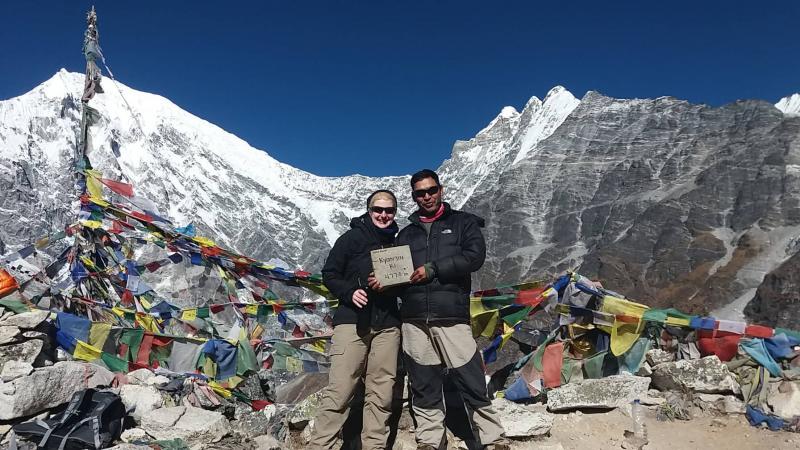

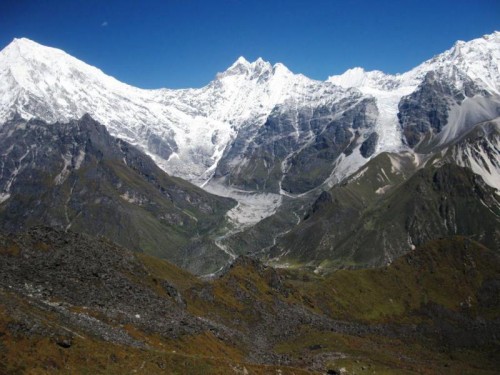

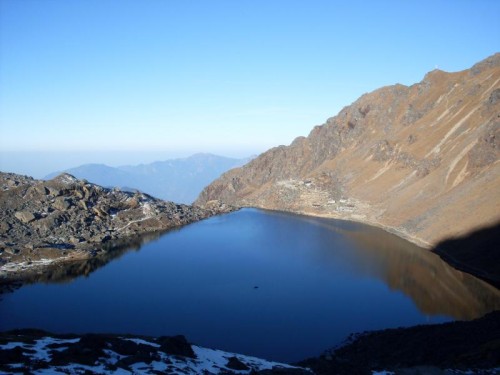


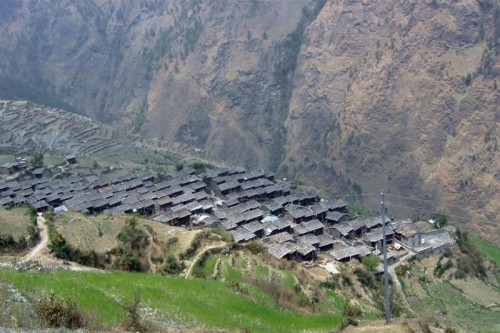
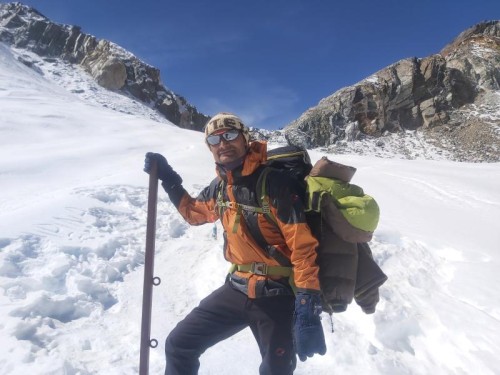
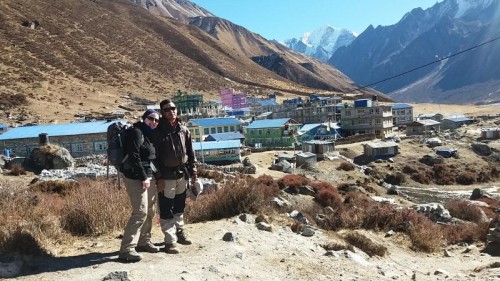
 USD 550
USD 550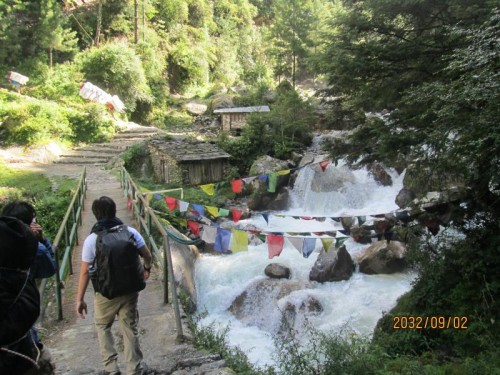
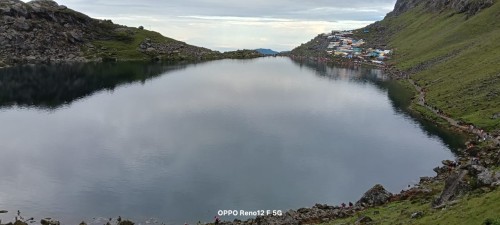
Doriea
United Kingdom
Great Company
18th June, 2023
We had a great guide and great porter for our Langtang Valley Trek. Not only did they coordinate EVERYTHING for the 8 days trek, but also helped with planning and booking the rest of our trip itinerary in Nepal. It made it really stress-free and easy to relax. Thanks for whole High Pass Adventure team a great experience!
Anna
Germany
Langtang Trek
18th June, 2023
I absolutely loved the trek!
The nature is beautiful and at this time of the year it is not overcrowded by tourists.
The organization was perfect. Purna and his team provided a down jacket and made recommendations about what to bring in advance.
As a solo trekker I went with Purna, his knowledge, his very good English as well as his people's skills contributed to this brilliant experience.
Louis Grannetia
The Netherlands
Langtang Valley Trek 10 Days
29th February, 2024
My daughter and I did the Langtang Valley trek together with HPA's guide/porter Gyan Mager in February. We are very pleased with the guidance and empathy of the management and guides of this organization. We had a great experience and after several treks with different parties in the past, they stood head and shoulders above the rest through commitment and professionalism without organizing everything to pieces. So plenty of room for customization and therefore your own input.
Price-quality ratio is great.